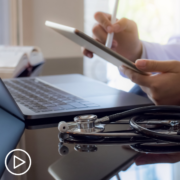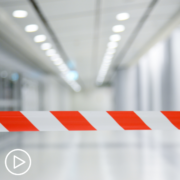There’s an App for That…Or There Should Be: Utilizing Technology for Better Health Outcomes
Health literacy has always been a passion project of mine ever since I was diagnosed with cancer. I stand by the notion that plain language and clear communication leads to better health outcomes. However, communicating with our care team isn’t always easy. How many of us have gone into an appointment only to leave the office 10 minutes later, wondering what happened and what our copay went to? Were all of our issues and questions addressed?
This is where we have to come in as advocates for our own health, and below are a few ways to do this:
- Try and focus on one ailment per appointment
- Write down a list of questions you want addressed prior to the appointment
- Ask questions during the appointment – you are the expert of your body and health
- If something doesn’t make sense, ask for the information to be explained in another way. Patients are found to be more compliant if they know:
- How to take their medications properly
- Why specific blood tests and imaging are ordered (i.e. if they’re necessary)
How do we keep track of all of this information, though? There are patient portals that keep track of our appointments and records, but those can often be hard to navigate, and they lack the capability of being able to enter our own information (i.e. about how we’re feeling). Additionally, different health systems have different portals, leading not only to lost passwords, but a missed opportunity for integrated healthcare. This is essentially senseless for cancer patients who have to keep track of multiple appointments and medications, all while trying to keep afloat in a system that wasn’t built for patients and their caregivers.
However, there’s a role technology can play here. I’ve heard of patients carrying around large binders of their records from appointment to appointment, but if we’re being honest, I don’t believe a physician or other member of a patient’s care team is going to take the time to go through it. Instead, utilizing the power of the device that we’re constantly carrying around and looking at may be the way to go (in addition to a smaller folder or journal for those that are comfortable with paper).
If we think about it, there’s an app for everything, and having an app to keep track of our cancer journey should be no different. What should this app be able to do? Here are a few things that I think are especially important:
- Keep track of:
- Medications (dosage, picture of what it looks like, how to take it and what to do if you accidentally miss a dose or take more than what is prescribed, ability to refill)
- Blood work (results and what they mean [featuring a scale of what’s low vs. normal vs. high], what to ask your doctor about in terms of next steps)
- Imaging (results and what they mean, what to ask your doctor in terms of next steps)
- Ability to connect with all members of your care team (primary care doctor, oncologist, nurse navigator even if they work in different health systems)
- Ability to connect with caregivers and share information with them
- A diary to describe daily thoughts, symptoms, and side effects, flagging specific keywords that can alert a member of your care team
- A calendar with appointments (date/time, office location, directions)
- Tips to assist with mental health (i.e. offering local or national support groups [both virtual and in-person], counseling that accepts insurance and/or is offered on a sliding scale)
- Exercise routines featuring different forms of exercise (yoga, pilates, HIIT, weightlifting, playing a sport, walking and running, etc.) based on you’re feeling side effect- and energy-wise
- Information about nutrition through the different phases of a cancer journey (pre-treatment vs. in-treatment vs. post-treatment) that includes recipes
- Most importantly, all of this information should be in plain language that’s easy to understand in whatever language the patient is most comfortable reading
Having an app that features all of these capabilities, I believe, would push the needle forward in patient care, not only creating better health outcomes, but a more satisfied patient. What would you add to the list?
Carly Flumer is a young woman who was diagnosed with stage I papillary thyroid cancer at the age of 27. She recently received her Master’s degree from Boston University in Health Communication and received her Bachelor’s from George Mason University in Health Administration and Policy. While being diagnosed with the “C” word at such a young age was a surprise, as it would be to anyone, she found strength, support, and inspiration in sharing her cancer journey on social media. As a result of her health outcome, she looks to advocate for other cancer patients through education, research, and health literacy.






